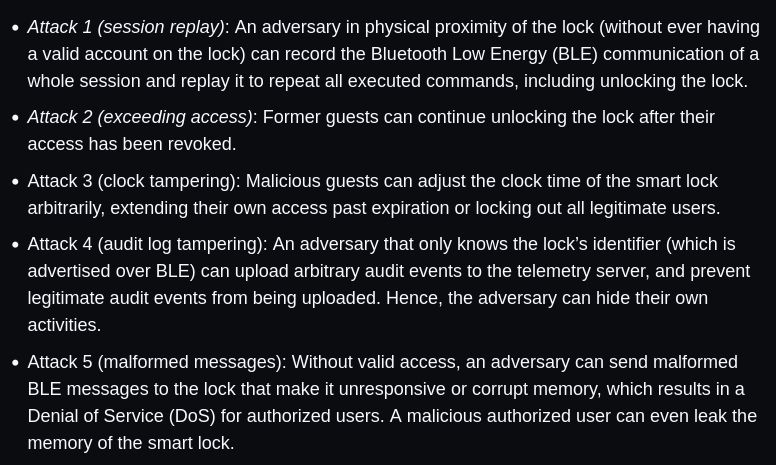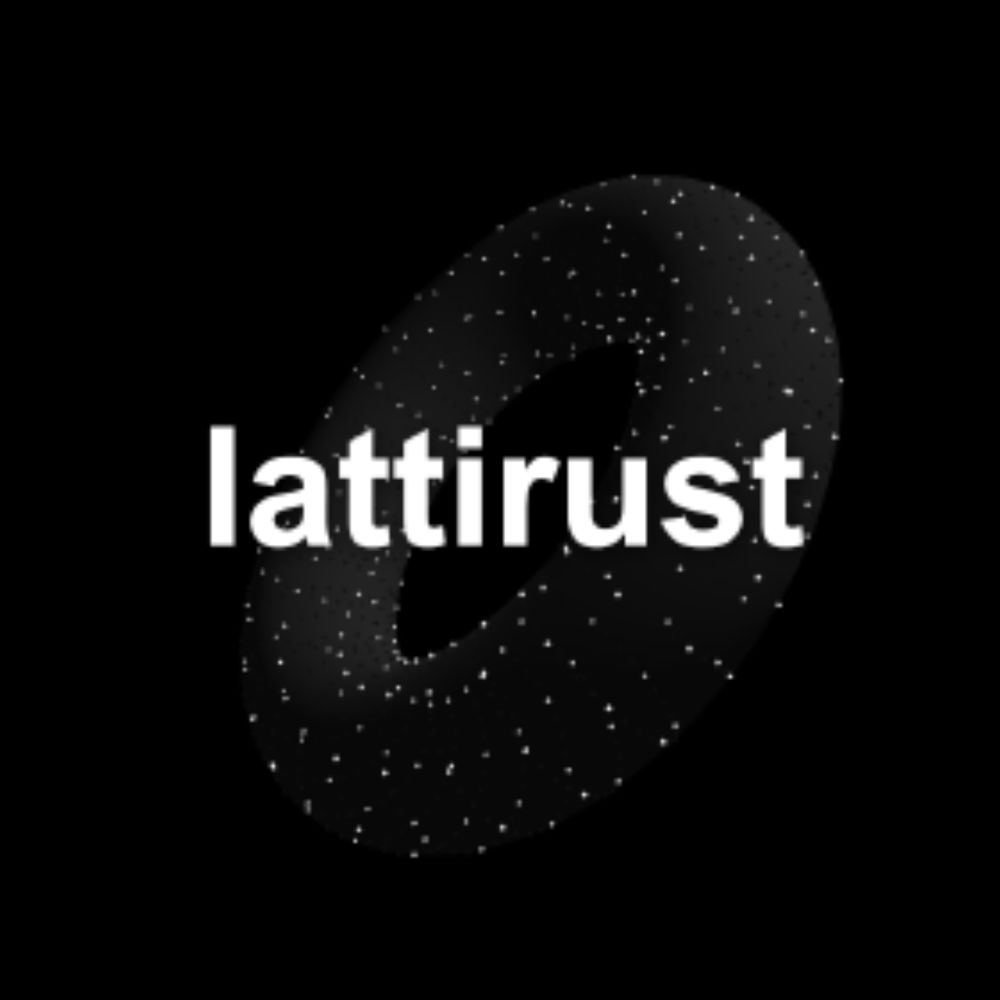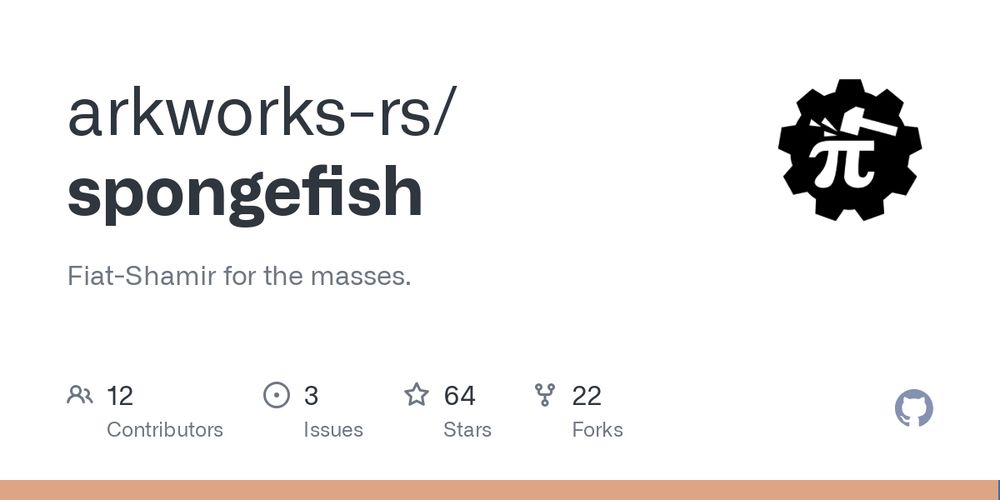
Finally, we show how modifications of the sumcheck protocol can achieve better time-space tradeoffs, and present (log^*N + k)-round protocols that run in time O(N * (log^* + k)) and space O(N^1/k) (and achieve linear time in the O(N) space setting).
14.08.2025 14:36 — 👍 0 🔁 0 💬 0 📌 0


Perhaps surprisingly, we show that the log log N factor is inherent, unless the exponent in matrix multiplication is 2 (in that case, we can recover the single multilinear tradeoff).
Further, we show that the tradeoff in Blendy was optimal.
14.08.2025 14:36 — 👍 0 🔁 0 💬 1 📌 0

We fix this, and show a sumcheck algorithm that runs in time O(N * (log log N + k)) and uses space O(N^1/k). This algorithm is concretely efficient, using up to 120x less memory at ~2x prover slowdown compared to non-space efficient alternatives.
14.08.2025 14:36 — 👍 0 🔁 0 💬 1 📌 0
In previous work, we showed that, for sumcheck claims about a single multilinear and any parameter k, there is a sumcheck algorithm that runs in time O(k * N) and space O(N^1/k). Annoyingly, we couldn’t find an equivalent for products.
14.08.2025 14:36 — 👍 0 🔁 0 💬 1 📌 0

Back to actual research…
We present a family of space-efficient sumcheck algorithms, and show that they are optimal! 🍹
Joint work with Anubhav, Ale, Elisabetta, @zkproofs.bsky.social, Tushar and Andrew
📚: ia.cr/2025/1473
🧑🏻💻: github.com/compsec-epfl...
14.08.2025 14:36 — 👍 6 🔁 2 💬 1 📌 0

Easy optimizations such as path pruning should improve proof size significantly. Sometimes the proofs also just contain some random trash (see below), which we could, um, avoid sending. Read the paper for more!
12.08.2025 22:52 — 👍 0 🔁 0 💬 0 📌 0
For the serious part of this post, this in fact should not happen, hash based proofs should be not-compressible. The fact that they are hints at serialization being suboptimal, and we should improve (as a community) to achieve proof size reduction at minimal cost.
12.08.2025 22:52 — 👍 0 🔁 0 💬 1 📌 0
Surprisingly, this leads to a reduction *across the board on proof size*, on each proof system that we tested (including ones I had written, and except for Ligerito, damn you Julia!), which is why we recommend to zip your proofs always.
12.08.2025 22:52 — 👍 0 🔁 0 💬 1 📌 0

We, um, just ran zip on them.
12.08.2025 22:52 — 👍 0 🔁 0 💬 1 📌 0
This has caused some headaches, which we found a great solution to using some relatively unknown techniques from information theory, buried in some papers published in 70s, leading to proof size reduction to as much as 60% of the original size!
12.08.2025 22:52 — 👍 2 🔁 0 💬 1 📌 0

Hash-based proofs tend to be larger than their elliptic curve counterparts, and a focus of the ethproofs.org initiative is to compress them to minimize the bandwidth requirements of validators
12.08.2025 22:52 — 👍 0 🔁 0 💬 1 📌 0


Excited to share the new frontier of reducing hash-based SNARKs proof size: a post-quantum secure lightweight black-box technique to reduce proof size to 60% of the original one!
w/ my wonderful coauthor Yuwen Zhang.
ia.cr/2025/1446
12.08.2025 22:52 — 👍 7 🔁 1 💬 1 📌 0

Attack 1 (session replay): An adversary in physical proximity of the lock (without ever having a valid account on the lock) can record the Bluetooth Low Energy (BLE) communication of a whole session and replay it to repeat all executed commands, including unlocking the lock.
Attack 2 (exceeding access): Former guests can continue unlocking the lock after their access has been revoked.
Attack 3 (clock tampering): Malicious guests can adjust the clock time of the smart lock arbitrarily, extending their own access past expiration or locking out all legitimate users.
Attack 4 (audit log tampering): An adversary that only knows the lock’s identifier (which is advertised over BLE) can upload arbitrary audit events to the telemetry server, and prevent legitimate audit events from being uploaded. Hence, the adversary can hide their own activities.
Attack 5 (malformed messages): Without valid access, an adversary can send malformed BLE messages to the lock that make it unresponsive or corrupt memory, which results in a Denial of Service (DoS) for authorized users. A malicious authorized user can even leak the memory of the smart lock.
Our WOOT paper went out of disclosure today. We found 5 attacks on the Master Lock D1000 which allow unauthorized unlocking, bypassing access revocation, forging log entries, and causing DoS.
If you're in Seattle, come to our talk given by Chengsong, one of the students I mentored for this paper.
11.08.2025 15:44 — 👍 9 🔁 3 💬 2 📌 0
Thank you!!!
23.07.2025 06:06 — 👍 0 🔁 0 💬 1 📌 0
thank you!!!
22.07.2025 18:35 — 👍 0 🔁 0 💬 0 📌 0
I want to thank my wonderful collaborators that have already been involved in this effort:
Gal Arnon, Remco Bloemen, Benedikt Bünz, Thomas Coratger, Ale Chiesa, @xyz-pierre.bsky.social, Eylon Yogev and William Wang.
Hope we can continue doing great work going forward ;)
22.07.2025 16:03 — 👍 1 🔁 0 💬 0 📌 0
This grant allows me to investigate how the recent advances in hash-based arguments and accumulation schemes (such as Blaze, FICS, FACS, STIR, WHIR and WARP) fit in Ethereum post-quantum transition, leading to an efficient and secure quantum-safe consensus.
(5/n)
22.07.2025 16:03 — 👍 2 🔁 0 💬 1 📌 0
SNARKs reduce verifying many signatures to verifying a single proof.
Hash-based succinct arguments offer conservative security against quantum adversaries, and have consolidated themselves as concretely efficient in all parameters of interest.
(4/n)
22.07.2025 16:03 — 👍 0 🔁 0 💬 1 📌 0

Hash-Based Multi-Signatures for Post-Quantum Ethereum
With the threat posed by quantum computers on the horizon, systems like Ethereum must transition to cryptographic primitives resistant to quantum attacks. One of the most critical of these primitives ...
Among hash-based schemes, XMSS signatures have emerged (ia.cr/2025/055) as an attractive candidate due to small proof sizes and concrete efficiency.
However, they lack homomorphic properties, which makes aggregation challenging.
We can solve this using SNARKs.
(3/n)
22.07.2025 16:03 — 👍 0 🔁 0 💬 1 📌 0
Currently, BLS signatures are used for this role, and they shine due to their aggregation properties.
However, the same homomorphisms that makes them aggregatable also makes them insecure against quantum computers.
Hash-based signatures and arguments offer an alternative.
(2/n)
22.07.2025 16:03 — 👍 0 🔁 0 💬 1 📌 0
Signatures are a powerful cryptographic primitive, used broadly in the Ethereum protocol.
Within consensus, they are used by validators to designate a new consensus state.
To reduce bandwidth requirement, the signatures are aggregated before propagation to the network.
(1/n)
22.07.2025 16:03 — 👍 0 🔁 0 💬 1 📌 0

A visualization on how signatures and aggregation are used within the Ethereum network: validator agree on a state, they sign and the signatures are then aggregated and propagated to the network.
Excited to share that I've been awarded a research grant from the @ethereum.foundation under the 2025 Academic Grants Round to explore how Ethereum can be made secure against quantum adversaries using hash-based arguments: a critical step for the long-term resilience of the network
🧵👇
22.07.2025 16:03 — 👍 16 🔁 0 💬 3 📌 0
I suggest giving the attacker a fully identity, makes the paper feel more real.
For me, it’s Giulio Rossi, a ferramenta from Abbiategrasso with a lovely family who hides a dark and tumultuous past in quantum random oracles
28.05.2025 03:34 — 👍 5 🔁 0 💬 1 📌 0

lattirust
Lattice zero-knowledge/succinct arguments, and more - lattirust
I'm happy to finally open-source lattirust, a library for lattice-based zero-knowledge/succinct arguments! Lattirust is somewhat like arkworks, but for lattices; and like lattigo, but for arguments.
➔ github.com/lattirust
20.05.2025 14:55 — 👍 32 🔁 16 💬 2 📌 0
It forces you to specify a domain separator at the start, which basically is a list of the squeeze/absorb operations in the protocol. If you deviate from that, the sponge will panick.
To achieve the third I actually have a proposal, but no time to implement...
15.05.2025 21:02 — 👍 2 🔁 0 💬 0 📌 0

Abstract. Proof-carrying data (PCD) is a powerful cryptographic primitive for computational integrity in a distributed setting. State-of-the-art constructions of PCD are based on accumulation schemes (and, closely related, folding schemes).
We present WARP, the first accumulation scheme with linear prover time and logarithmic verifier time. Our scheme is hash-based (secure in the random oracle model), plausibly post-quantum secure, and supports unbounded accumulation depth.
We achieve our result by constructing an interactive oracle reduction of proximity that works with any linear code over a sufficiently large field. We take a novel approach by constructing a straightline extractor that relies on erasure correction, rather than error-tolerant decoding like prior extractors. Along the way, we introduce a variant of straightline round-by-round knowledge soundness that is compatible with our extraction strategy.
Linear-Time Accumulation Schemes (Benedikt Bünz, Alessandro Chiesa, Giacomo Fenzi, William Wang) ia.cr/2025/753
03.05.2025 20:13 — 👍 5 🔁 2 💬 0 📌 0
We believe that our scheme is concretely efficient, and essentially optimal (up to constants) among hash-based schemes. Further, the flexibility of choice of field, code, accumulation parameters and more should enable very interesting tradeoff spaces.
28.04.2025 11:05 — 👍 3 🔁 0 💬 0 📌 0
We develop techniques that might be of independent interest, such as a notion of round-by-round knowledge soundness that allows to prove straight-line knowledge soundness for codes without error tolerant decoders, out-of-domain samples for general linear codes, and more.
28.04.2025 11:05 — 👍 0 🔁 0 💬 1 📌 0
Ex NY Times, now author of Substack Paul Krugman. Nobel laureate and, according to Donald Trump, "Deranged BUM"
Mathematician at UCLA. My primary social media account is https://mathstodon.xyz/@tao . I also have a blog at https://terrytao.wordpress.com/ and a home page at https://www.math.ucla.edu/~tao/
cryptography, ctf
priv.pub
PhD candidate @ Stanford Applied Cryptography Group
https://c.rypto.systems/
Assistant professor in cryptography at Aalto University, Finland
https://russell-lai.hk
https://research.cs.aalto.fi/crypto/
https://algorithms.fi
Cryptography @ 3MI Labs
PhD @ COSIC, KU Leuven
CTF @ organizers
Postdoctoral researcher in cryptography @ PACY Lab - UniBw, München.
Advocate for privacy-preserving technologies and collector of disco.
Homepage: patrick-hough.com
CEO @ingonyama.com | High-speed, fancy cryptography.
Loves all languages; speaks only in math.
Assistant Professor at Cornell. CS theory, cryptography, quantum computing. he/him
Post-doc at ENS de Lyon https://www.mariascrs.com/
Interested in post-quantum cryptography and isogenies
Co-organiser of The Isogeny Club https://isogeny.club/
Researcher in cryptography @ IBM Research, chief isogenista, SageMath developer, DevOps in my spare time. Opinions my own.
On Mastodon: @luca_defeo@ioc.exchange
Post-doc at COSIC, probably more known for dubious limericks than research.
Lecturer in Cryptography at the University of Tartu.
From Estonia.
ZK proofs, SNARKs, security assumptions.
Homepage: https://sites.google.com/view/jannosiim
PhD student in Yale Applied Cryptography Lab working on scaling zero-knowledge proofs
www.hadasze.me
X: @idocryptography
Just joined BlueSky!
I sometimes do math and stuff
chief scientist @baincapitalcrypto.com
Theoretical Computer Scientist and Cryptographer at U. Salerno, Italy. Juventino.
Full Professor of Cryptology @ Universität der Bundeswehr München | Research Institute CODE👾 Prev: AIT Austrian Institute of Technology; Lect. TU Wien; TU Graz

















